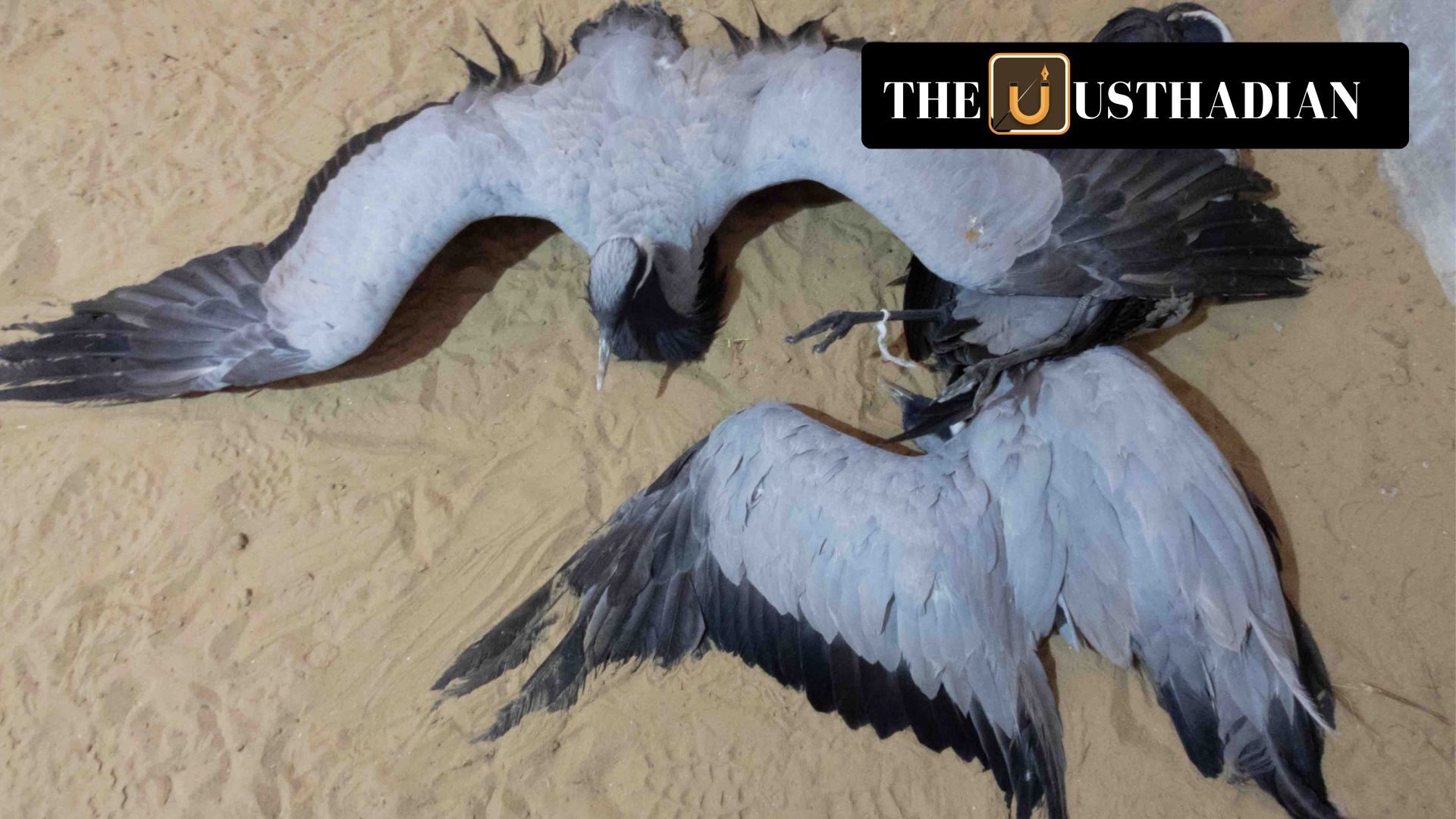Alarming Rise in Bird Deaths in Jaisalmer
Avian Flu Hits Rajasthan: Migratory Cranes and Endangered Species at Risk : In January 2025, reports began surfacing from Jaisalmer, Rajasthan, about an unusual number of deaths among Demoiselle cranes, locally known as Kurjan. By January 20, the death toll had climbed to 33 birds, causing serious concern among wildlife officials. Investigations confirmed the presence of the H5N1 avian influenza virus, intensifying fears of a potential epidemic affecting not only birds but also the region’s fragile ecosystem.
Long-Distance Migrants Face a Deadly Threat
Demoiselle cranes, which fly nearly 4,000 kilometers from Central Asian countries like Mongolia, Kazakhstan, and China, reach the desert landscapes of Rajasthan to spend the winter. They inhabit areas such as Lathi and Degaray Oran for nearly six months. However, this year, their seasonal arrival has been overshadowed by risks from viral infection, electrocution, and environmental stressors, casting doubt on the future of their safe migration.
The Ecological and Cultural Significance of the Cranes
These elegant migratory birds, known for their slender build and stamina, breed across vast areas from the Black Sea region to northeastern China. Their arrival in Rajasthan holds ecological as well as cultural importance. But with the current spike in fatalities, their population health is under threat, raising concerns about the state of migratory bird habitats in India.
Confirmed Outbreak and Scientific Testing
On January 17, an incident in Bankalsar village saw 14 cranes found dead, prompting immediate sample collection. The samples were tested at the National Institute of High-Security Animal Diseases, where the presence of the H591 subtype of the H5N1 virus was verified. The confirmation led to swift containment measures to limit further spread among birds.
A Trend of Bird Fatalities Over the Years
The recent deaths follow a recurring pattern. In 2022, 6 crane deaths were reported, followed by 11 in 2023 and 9 in 2024. Experts attribute these recurring deaths to toxic water bodies, pesticide-contaminated grains, and the effects of climate change. These annual episodes highlight the chronic vulnerability of migratory species in India’s arid zones.
Containment Efforts by Authorities
To manage the situation, the Rajasthan government has activated Quick Response Teams (QRTs) to disinfect affected areas and ensure safe burial of dead birds. Chemical sterilization of nearby water sources and feeding spots is also underway. However, conservationists caution that unless underlying causes like pollution and habitat degradation are addressed, such outbreaks could become a regular occurrence.
Fear for the Great Indian Bustard
The situation has sparked concerns for the Great Indian Bustard, Rajasthan’s state bird, which is already critically endangered due to habitat loss and powerline collisions. As a precaution, breeding facilities in Sam and Ramdevra have been temporarily closed to prevent potential exposure. This development underscores the urgent need for proactive conservation and disease surveillance.
STATIC GK SNAPSHOT
Avian Flu Hits Rajasthan: Migratory Cranes and Endangered Species at Risk :
| Fact | Details |
| Migration Distance | Demoiselle cranes fly 4,000 km from Central Asia to Rajasthan |
| First Reported Death (2025) | January 11; outbreak confirmed by January 17 |
| Identified Virus | H5N1 strain (H591 subtype) |
| Endangered Species at Risk | Great Indian Bustard, Rajasthan’s state bird |
| Testing Authority | National Institute of High-Security Animal Diseases, India |








